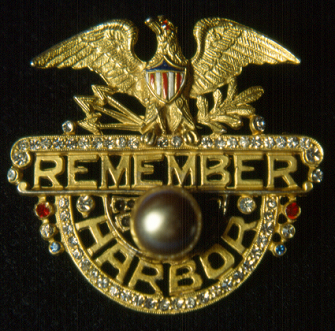Book review
By Ken Ford and Steven J. Zaloga, Osprey Books, 368 pages, $24.95
Buy this book now
Osprey Books and authors Ken Ford and Steven J. Zaloga have come up with an original way to tell the story of the invasion of Europe. Departing from the storytelling that Cornelius Ryan and Stephen E. Ambrose mastered so well, Overlord is true to its Osprey roots, containing a wealth of detail about units, weapons, uniforms, and other minutiae for both the Allies and the Germans, making it an indispensable reference for students of the invasion.
 All the features one has come to expect from an Osprey book are here in this handsomely produced coffee-table volume— only more of them. Ford and Zaloga lay out the orders of battle for the Allies and the Germans, invasion beach by invasion beach. They explain the battle plans of both sides in detail. Paintings of key moments are rendered with exacting attention to authenticity. The accompanying extensive captions fit the scenes into the D-Day narrative and identify points of interest such as details of weapons, uniforms, and insignia. Scores of authentic photographs, many of which will not be familiar to most readers, help move the story along.
All the features one has come to expect from an Osprey book are here in this handsomely produced coffee-table volume— only more of them. Ford and Zaloga lay out the orders of battle for the Allies and the Germans, invasion beach by invasion beach. They explain the battle plans of both sides in detail. Paintings of key moments are rendered with exacting attention to authenticity. The accompanying extensive captions fit the scenes into the D-Day narrative and identify points of interest such as details of weapons, uniforms, and insignia. Scores of authentic photographs, many of which will not be familiar to most readers, help move the story along.
The book is not entirely laudatory when it comes to the Allied preparation for the landings, nor is it entirely condemnatory of the Germans. As Ford and Zaloga describe it, the preparation for the landings was not the best. The generals doing the planning, for example, tended to ignore the lessons of the Pacific theater, brushing off the landings there as minor compared to the army’s invasions of Africa, Sicily, and Italy. Army generals dismissed amphibious tractors, or amtracs, which could get loads of marines out of the water and off the beach safely. Even though 300 of these armored landing craft were sent to England in time for the invasion, none were used. One wonders how many of the GIs who drowned in the surf or were shot dead on the beach might have lived if they had been landed in amtracs instead of Higgins boats.
The dismissal of the amtrac was part of a larger underestimation of the difficulties the soldiers would face when they landed. The invasions of Africa, Sicily, and Italy were mostly uncontested at the beach. The battle was inland in those campaigns. What army planners failed to grasp fully was that the Normandy landings were going to be hotly contested.
American generals also underestimated the quality of the beach defenses and the troops manning them. Prior to Field Marshall Erwin Rommel being put in charge of shore defenses, there were few, if any, obstacles on Normandy’s beaches, and, American soldiers were told, the enemy divisions were filled with “old men and little boys.” Rommel changed all that. He upgraded some of the units and decreed that if the enemy were to be beaten, it would have to be on the beaches.
Rommel’s soldiers erected hundreds of beach obstacles. Some were meant to hide under the water at high tide and were tipped with antitank mines to blow up landing craft. Steel obstructions were placed on the beach to impede the landing of armor and vehicles. Behind the seawall, Rommel established pillboxes, machine gun nests and antitank guns to sweep the beach clean of enemies. Behind those, he sited artillery to hammer the landings. He also flooded fields to drown paratroopers and lodged logs vertically in the ground to impale gliders.
Overlord demonstrates how little details can make a big plan unravel. Stung by the scattered airborne landings on Sicily—it was a lucky trooper who landed anywhere near a fellow American—the generals worked hard to make the D-Day night drop more coherent. Well before the paratroopers of the 101st and 82nd Airborne divisions were scheduled to land, pathfinder troops were to parachute in and mark the landing zones with special lights. The entire plan was undone by a cloudbank that disoriented the pilots, causing them to guess when dropping the pathfinder teams. Most of the pathfinders spent the early hours of D-Day hurrying to get to their zones and mark them. When the C-47s carrying the main airborne assault arrived, they were stymied by the same cloudbank and by the absence of the signal lights on the ground. Pilots again had to make drops by best guess. Paratroopers were scattered all over the landscape. These motivated soldiers managed to make provisional units out of whatever friendly manpower they could find and fought hard to disrupt the Germans.
Illustrated with three-dimensional maps, a wealth of tables, and wonderful paintings and photographs, Overlord is both the complete story of the invasions and the best reference book to date on D-Day. No matter how you approach the study of World War II, this book belongs on your bookshelf.
—Brian John Murphy
Fairfield, Connecticut



FOLLOW US »
